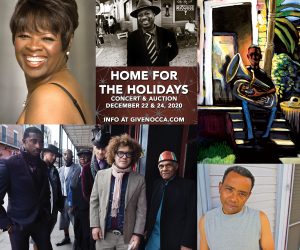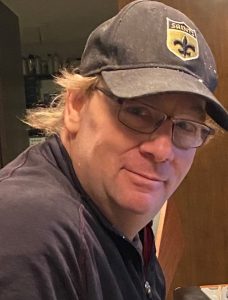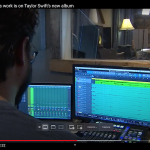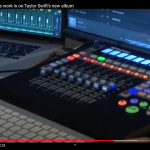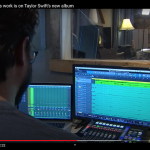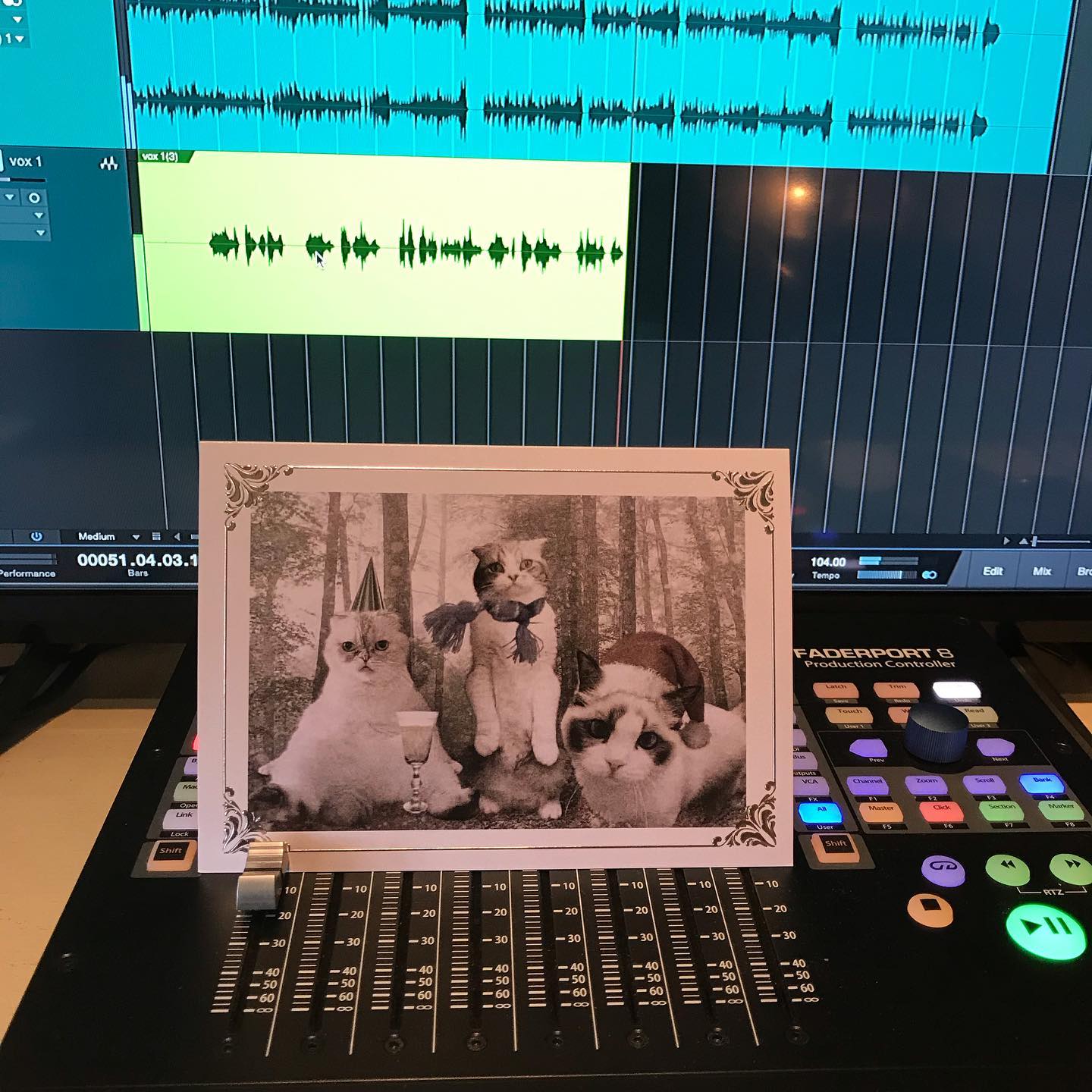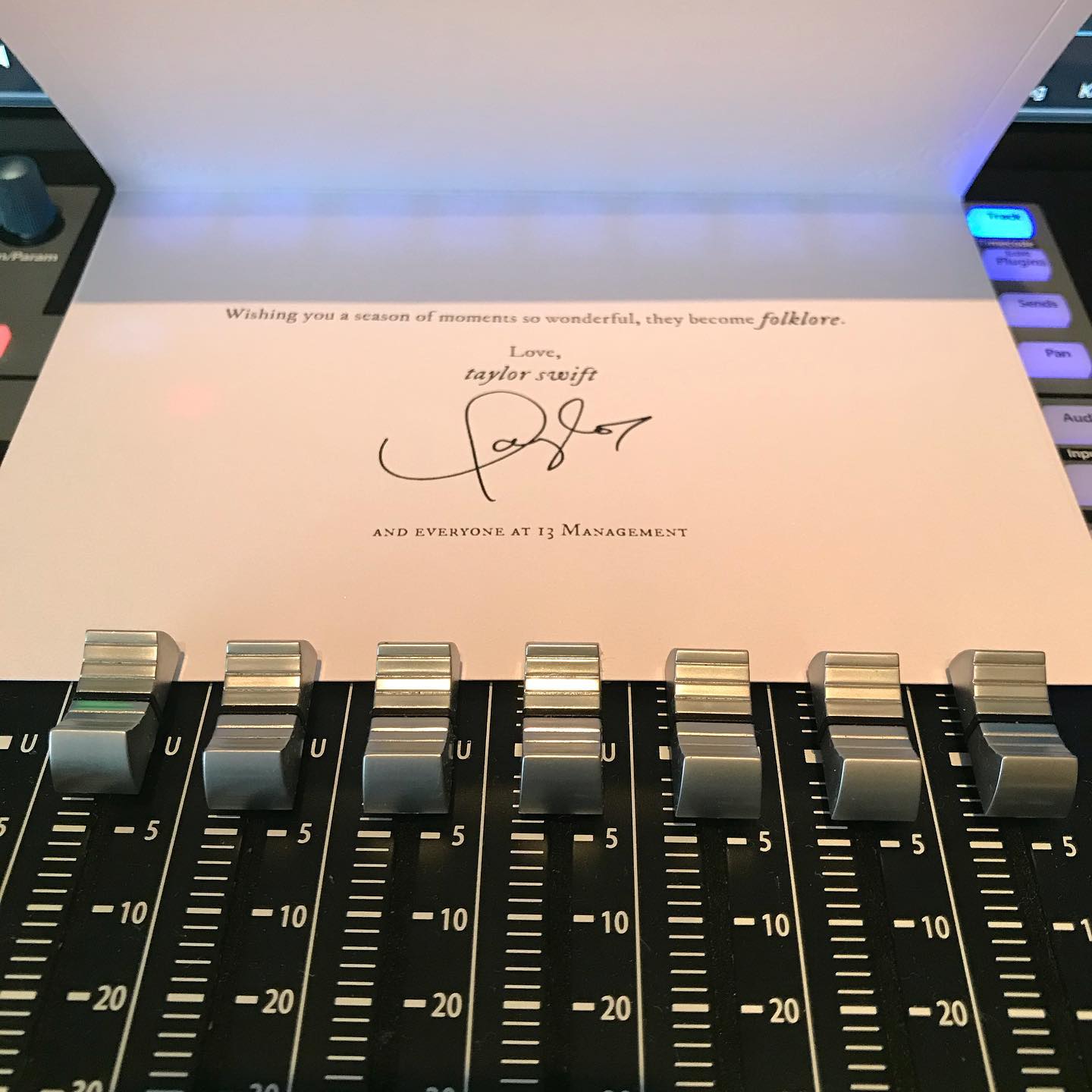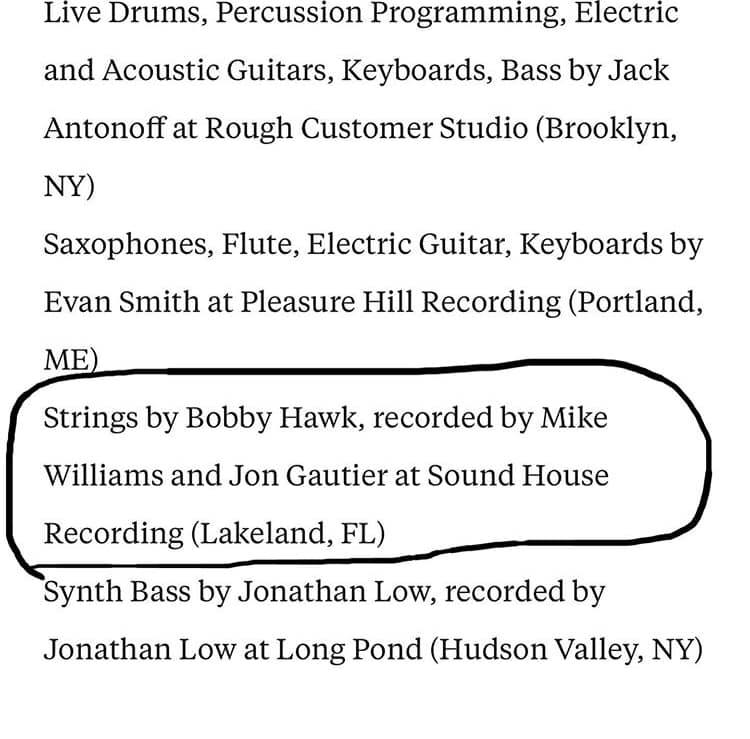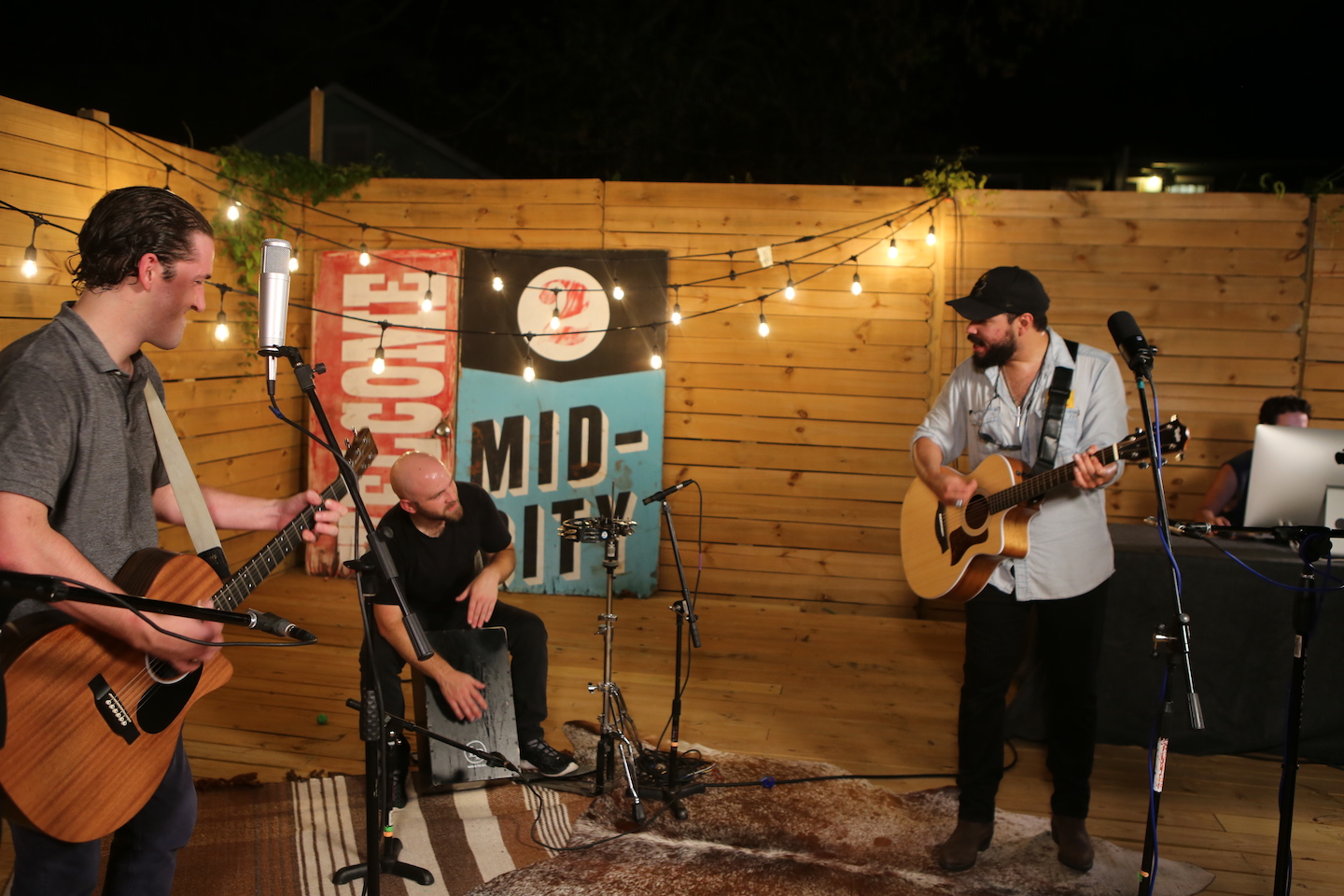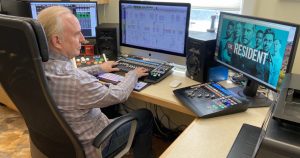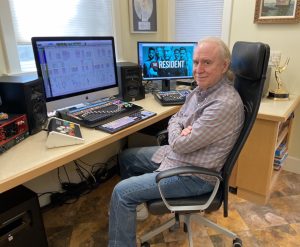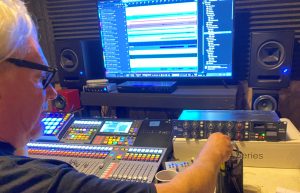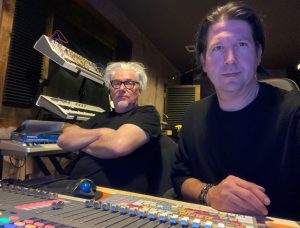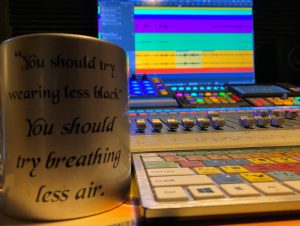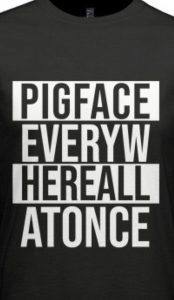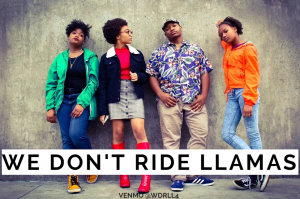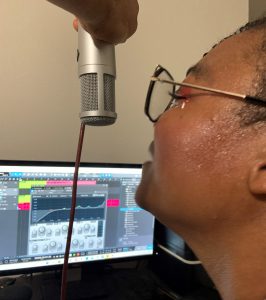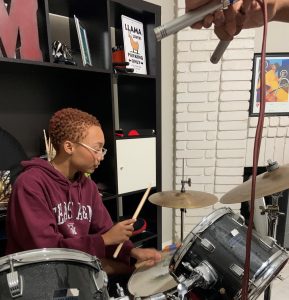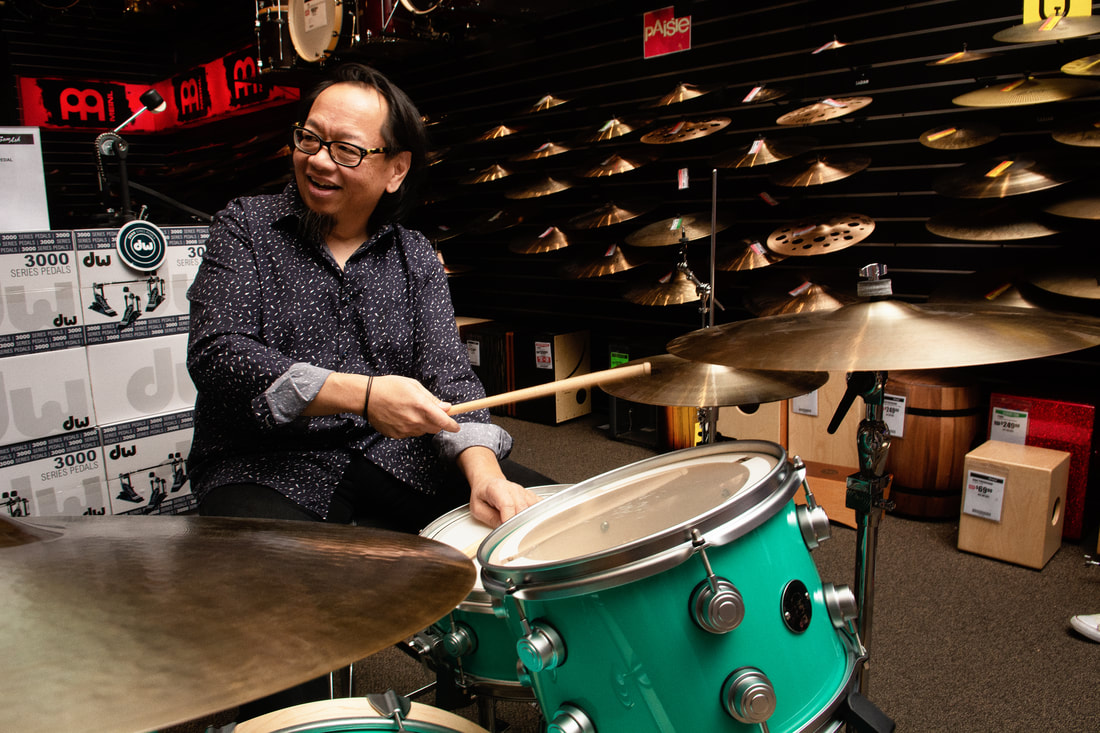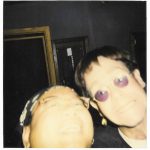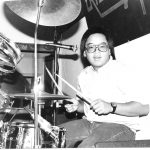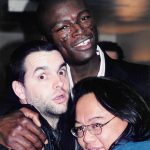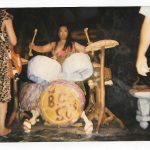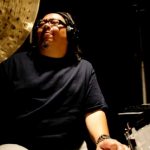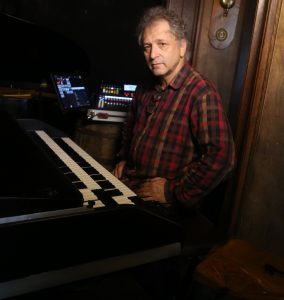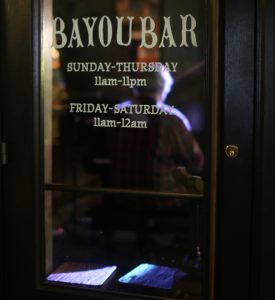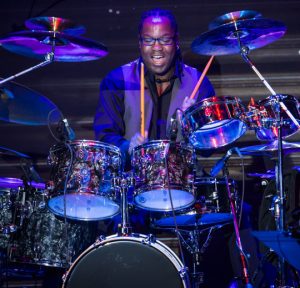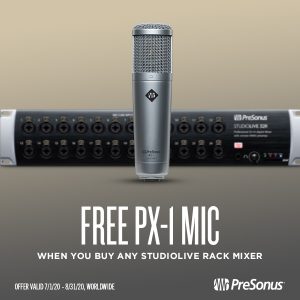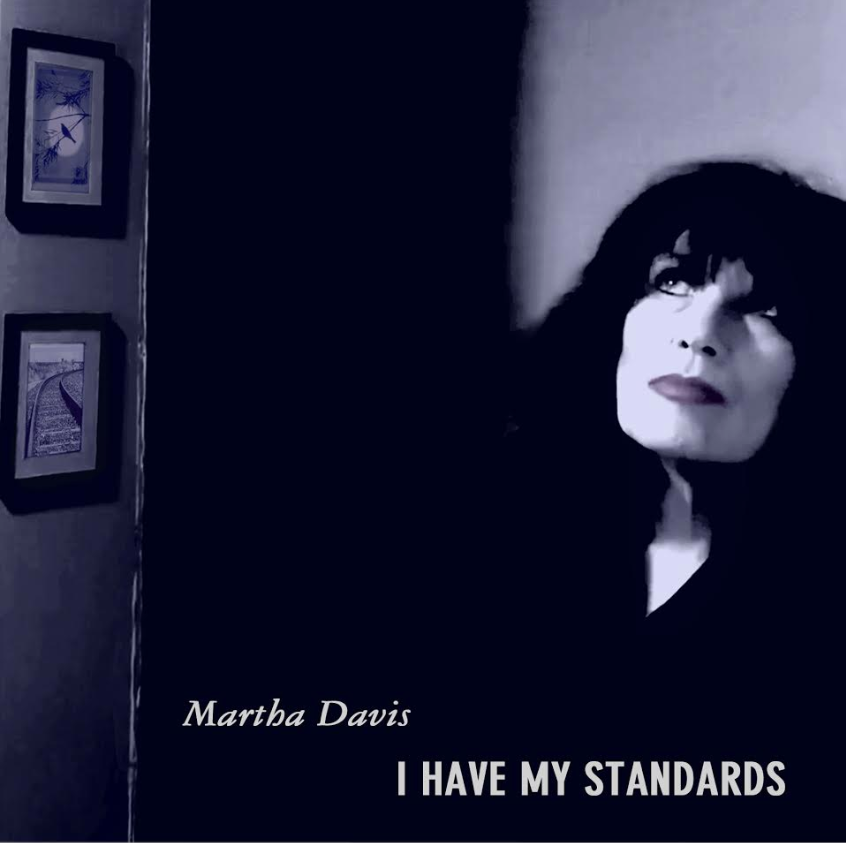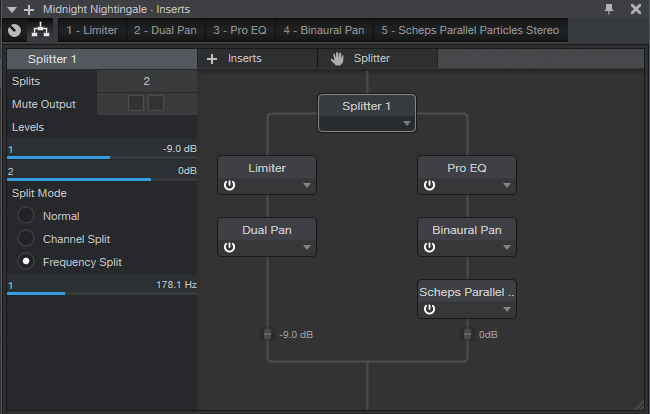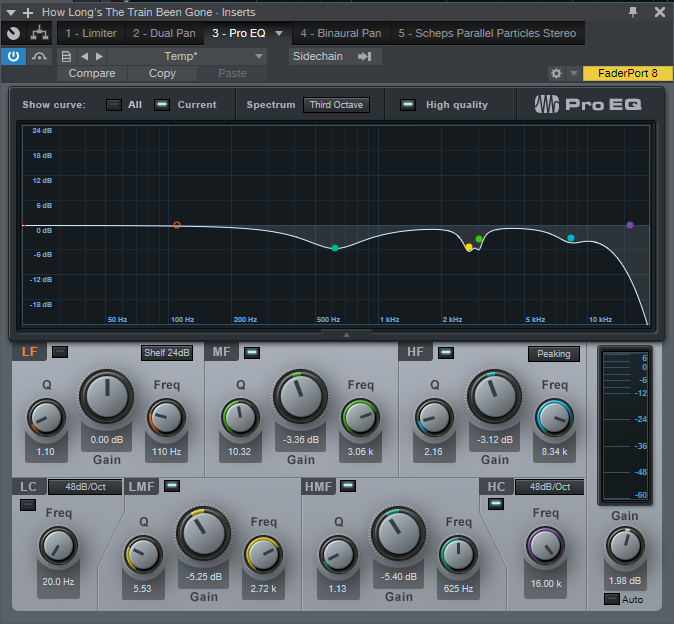Category Archives: Artist
Home For The Holidays: Steve Himelfarb On Using The StudioLive 32S With Studio One At NOCCA
Home For The Holidays is a free virtual concert featuring holiday music by some of New Orleans’ favorite musicians including Jon Batiste, Preservation Hall Jazz Band, Irma Thomas, Kermit Ruffins, John Boutte, and others.
The performances by Irma Thomas, John Boutte, and Kermit Ruffins were recently tracked live at the New Orleans Center For Creative Arts (NOCCA) by professional recording engineer and faculty member, Steve Himelfarb using the PreSonus StudioLive 32S digital mixer and Studio One DAW software.
Let’s get to know him a bit better and hear what he has to say about integrating Studio One and StudioLive for use in live recordings!
Steve began working in recording studios around Los Angeles when he was about 18, doing the midnight til 9:00 a.m. cleanup shift at Cherokee Studios. As a result, he had priceless experiences including meeting Mötley Crüe (still one of the loudest he has ever heard to this day) when Roy Thomas Baker was mixing their debut record. Another fond memory was that of Ray Manzarek producing X’s Wild Gift during the heyday of the 80s music scene.
“Cherokee was super rock & roll, yet they were very strict with what they wanted from their cleanup people. I was taught how to conduct myself as a young would-be recording engineer,” Steve fondly recalls.
At 19, Steve began working for Capitol Records in the famed Capitol Studios building putting in a solid five years of work. Some of his album credits include Sheila E’s first album, Crowded House’s Crowded House, Bob Seager’s Like a Rock, Dwight Yoakum’s GTRs Cadillacs and Tori Amos’ Y Kant Tori Read. (Fun Fact: Tori and Steve have been friends since high school.)
Steve moved to New Orleans at the age of 25, and the first record he engineered in town was Buckwheat Zydeco’s On A Night Like This, which was produced by Chris Blackwell and nominated for a Grammy. He subsequently bought the studio that he worked at in the late 80s and rebuilt it with a Neve console and Studer tape machine. In 1993, Steve sold that studio and took a couple years off, sort of. To date, he has worked on 15 gold and platinum records and has five Grammy-nominated record credits to his name.
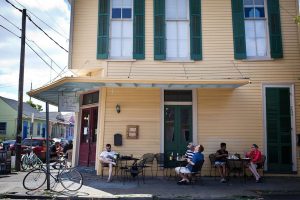 Teaching himself to bake, Steve decided to open a small restaurant in the French Quarter of New Orleans called Cake Café, and became affectionately known as “The Cake Man” in the Marigny district. After 13 years of business (fast-forwarding past Hurricane Katrina to about four months ago), he sold the restaurant and wrote a cookbook.
Teaching himself to bake, Steve decided to open a small restaurant in the French Quarter of New Orleans called Cake Café, and became affectionately known as “The Cake Man” in the Marigny district. After 13 years of business (fast-forwarding past Hurricane Katrina to about four months ago), he sold the restaurant and wrote a cookbook.
Incidentally, around three years ago (after encouragement from Tori Amos) he started getting back into recording again and dove headfirst into the world of digital recording using Studio One.
Here are some thoughts by Steve, in his own words:
I really like the workflow of Studio One. It feels like I am working on a console and not a computer. The drag-and-drop integration is such a great feature. The plug-ins are very musical. Lately, my go-to has been the VT-1 on the stereo bus.
Using the StudioLive 32S in a live recording situation is wonderful. In all honesty, this type of setup used to be such an involved task with a mobile recording truck and countless hours of set up. The StudioLive 32S, along with the NSB digital stage box, is such a game-changer. Total set-up time takes about an hour. The sound is clean. I like the Fat Channel limiters. They are kinda my safety net against clipping in dynamic situations. I have used the StudioLive 32S on about eight projects over the past year, and it is truly a sturdy piece of equipment for such demanding situations. In live recording situations, you just need to count on your equipment and the StudioLive has always performed excellently.
 I really like how the company has developed the workflow of the recording studio in the current digital age. I could see how, about six years ago, PreSonus was ahead of the pack in their development of studio ecosystems. Now everyone is building small-format consoles and integrated systems.
I really like how the company has developed the workflow of the recording studio in the current digital age. I could see how, about six years ago, PreSonus was ahead of the pack in their development of studio ecosystems. Now everyone is building small-format consoles and integrated systems.
Developing young artists has always been a large part of the work I have done. Teaching at New Orleans Creative Center For The Arts (NOCCA) is a natural extension of the work I love.
To learn more about this historic pre-professional arts training center for high school students in Louisiana, please visit and support them at: https://noccainstitute.com/ and https://www.nocca.com/
Studio One used on Taylor Swift’s TWO Surprise Records, Folklore and Evermore
While binging some Taylor Swift videos a couple of weeks back, Peyton (our very own Inside Sales Coordinator) stumbled upon this video:
Imagine our surprise when Studio One, a FaderPort 8, and a pair of Scepters are prominently displayed with Taylor’s music in the background. We had to find out more about this project, the studio, the engineers, and how Studio One helped TWO of Taylor’s secret albums come to life, Folklore and Evermore. Here’s our interview with Jonathan Gautier, sound engineer and owner of Sound House Studio in Lakeland, FL.
- Sound House Studio
Give us some background on yourself. How long have you been making music?
I started playing the piano at age five. My parents pretty much nurtured rather than forced learning music, so I latched on rather quickly. From 5th grade to 8th grade, I went to a performing arts school, Rochelle School of the Arts, where my mother taught shortly after we moved from Boston to Lakeland. While there, I played cello in the orchestra and sang in the choir. After middle school, I got accepted into Harrison Arts Center for piano. Throughout this whole time, I was playing in church and playing in bands. After high school, I went to the University of Central Florida where I studied Digital Music/Music Production and later received my master’s degree in Music/Music Technology.
How has the music industry changed since your early days?
I’m 36, so I am not sure if I would be considered “old school,” but I feel like the music industry is changing for the better since I started. More tools are accessible than when I started, and you can definitely make music at a better quality. I started out on the original Mbox and a Tascam 4-track in high school, and now people are making better quality music on their phones than I ever did. I also feel that artists are being more responsible with their songs, especially on how they brand themselves, where they want to record, and how they want to use streaming platforms.
Who has been an influence in your life?
My dad was one of my major influences in my life. He, along with my mother, definitely understood the dream that I had to be a producer and own a studio. My dad always would tell me that the world needs dreamers.
Can you please share with us about the Taylor Swift project?
One of our clients, Rob Hecht, aka “Bobby Hawk,” comes to the studio frequently to record violin for various artists, all of which are not disclosed to us. Not even a day before Folklore is released, we get a text from Bobby and he tells us that we have a credit on Taylor Swift’s new album. It was definitely a surreal experience because it came out of nowhere. I almost didn’t want to believe it and when Bobby sent us the link to the credits, sure enough on the song “August” there it is: violins by Bobby Hawk recorded at Sound House Studios by Jonathan Gautier and Michael Williams! (Michael is our other engineer.) We also received another credit on her sister album, Evermore, which was just released on the song “Gold Rush.”
What was your first PreSonus product? What all do you have now?
I have known about PreSonus for a while now. They were one of the first products that I started to build a studio around. My first PreSonus product was the two-channel tube preamp, the BlueTube, and then I had the Digimax LT that I used for an extra eight channels along with my Digi003 rack. Now I use Studio One for my DAW, a FaderPort 8 production controller, Eris 8s as monitors, and a DigiMax DP88.
When did you first hear about Studio One?
Definitely Joe Gilder and Home Studio Corner even before he was heavily involved with PreSonus. Also, the tech director at our church talked about it a lot.
Any user tips or tricks based on your experience with Studio One?
One of my favorite features in Studio One is the Pipeline XT plugin that allows you to use your outboard gear as plug-ins. That was a game-changer for me. I also think pocketing audio tracks using the cursor and Option-Command to line things up over global quantizing is better, at least for me.
How easy/difficult was Studio One to learn?
Coming from Pro Tools, I felt that the learning curve was easier than I thought it would be. I also love the wealth of online resources there are for Studio One, so I never felt stuck. Since making the switch to Studio One and having other PreSonus gear, I have felt that I have been able to be more productive in my studio than ever before.
Recent projects? What’s next for you?
Well, aside from the Taylor Swift stuff, I produced an album project for my church, Access, and another church, Redemption Church. Currently producing album projects for a few local artists: Hana McCartnety and Giselle Gutierrez, as well as mixing virtual choir performances for schools around the country and live recording and mixing for churches for their live streaming. You can check out our new releases on our Spotify Playlist!
HUGE congrats to Jonathan and Bobby for all their success from everyone at PreSonus… and Happy Birthday to Taylor Swift!
Connect with Sound House Studio on Instagram here!
Listen to Sound House Studio’s Artist playlist here!
River City Session episode 11 with Hitchhiker!
In celebration of our 25th anniversary, PreSonus announced the new River City Sessions performance series earlier this year. The online series features regional artists in the Greater Baton Rouge area performing in PreSonus’ world-class, Walters-Storyk Design Group-designed River City Studio at PreSonus HQ in Baton Rouge, Louisiana. COVID-19 restrictions forced us to close the studio to individuals who are not PreSonus employees, so we decided to take these sessions outside! Our latest session (#11 for those keeping track…) features local rocker Luis Manuel and his band The Hitchhiker performing “Glad it’s Not Her, Glad it’s Not You.” Get to know Luis and watch the session below.
Give us some background on yourself. How long have you been making music?
I’ve been making music for the better part of the last 12-13 years. I learned how to play guitar by ear listening to bands like GNR, Thin Lizzy, The Darkness, ELO. Eventually, I started doing my own acoustic shows, did a few tours around the US with several bands, and then morphed into the Hitchhiker.
How has the music industry changed since your early days?

I’m sad to say it’s changed a lot! It seems like nobody cares about music as much as they care about how to run clout and pander with it. Maybe I’m just old? Could be, but The Hitchhiker boys can still rip after working 40 hours a week and slamming Jäger bombs.
Describe the first time you wrote a song? Produced it?
The first time was probably back in 2008 with my friend Josie. He really got me pumped about doing my own music. The guy is a musical wizard. The song was likely about my second breakup. Pre and post-production is the most fun part for me. I usually take charge, but the dudes always come up with awesome ideas that we always end up using. I usually write the music and the melody first, always based on mood. Then I bring parts of the rhythm section to Mark. He turns it into a juggernaut. Afterward, we collectively go from there, adding layers of cool. Big rocker guys. Great players. Great friends. Love them to death.
Who has been an influence in your life?
I have 3-4 spiritual leaders besides my dad. Oh, and Thin LIZZY.
Have you ever wanted to give up on music? What keeps you going?
Yes. Sometimes it’s writer’s block, sometimes it loses the “fun factor” when your band members have a lot of other important things go around. It can be demoralizing, but we’re big boys now! Gotta pay the bills! What keeps me going is that I can’t stop picking up that damn strat I just bought!
What do you like about PreSonus? What caught your eye?
All PreSonus products are very user-friendly, affordable, up to date and durable. Can’t beat that. The staff is phenomenal, all-around great people. They’ve always considered me even though I can’t sing very well and I’m forever grateful to them for that.
How has COVID-19 impacted your music?
It’s taken money out of my pocket because of lockdowns. I miss live shows, performing, and just enjoying the show! I think everyone can agree about that!
What are your plans for 2021?
Write and certainly release more music with the band. Work my tail off all across the board, be a better man, and love America even more.
Listen to The Hitchhiker here!
From Oingo Boingo To The Resident: Bill Jackson Talks Faderports
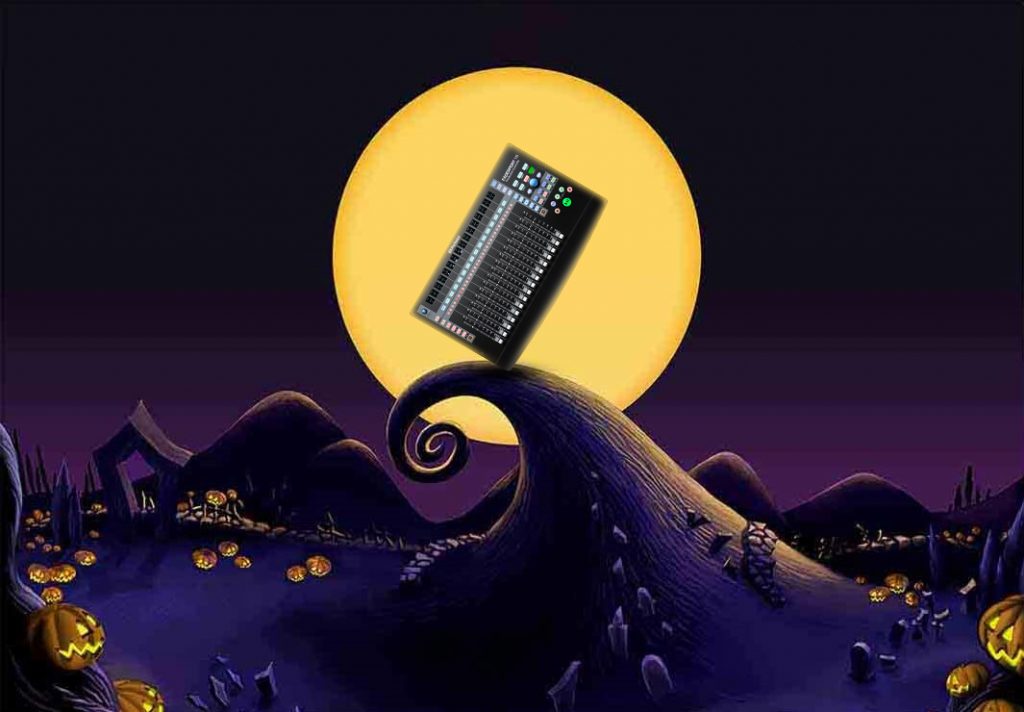 Foreword by Perry Tee (PreSonus Artist Relations Manager):
Foreword by Perry Tee (PreSonus Artist Relations Manager):
2020 has been a year like none other that most of us can remember in our lifetimes. But, we managed to see another Halloween weekend come and go… and true to my own annual tradition, I busted out the Oingo Boingo playlist to honor the songwriting/compositional mastery of Mr. Danny Elfman, along with one of my all-time favorite drummers, Mr. Johnny “Vatos” Hernandez and his quirky approach to propelling all those amazing songs they created in the 80’s.
So, I had the honor of spending time this past NAMM 2020 in Anaheim at our PreSonus Booth with Mr. Bill Jackson, who I discovered was Oingo Boingo’s recording engineer on one of the songs to a hit movie I used to watch ad infinitum back in my youth, Weird Science and all subsequent album releases as well as my go-to end of year holiday film (to this day), Tim Burton’s Nightmare Before Christmas. We spoke at length about how he’s been using our Faderport line of control surfaces to craft his mixing with total human organic interactivity.
Here then, is what he had to say and much more!
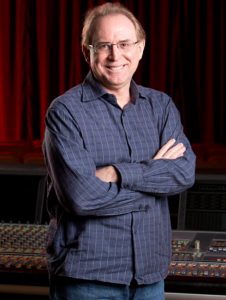 I started working with sound when I was five years old. For Christmas, my parents gave me (what was probably) the first reel-to-reel tape recorder in our town.
I started working with sound when I was five years old. For Christmas, my parents gave me (what was probably) the first reel-to-reel tape recorder in our town.
During college, I played guitar in bands and also recorded them, as well as other local artists, with a Teac A3340-S. I had no EQ on my Tascam mixer, but I had a Tapco spring reverb.
My career started at Sunset Sound in Hollywood. I started as the runner, but I was always going in early and staying late. Sunset has 3 rooms, and I would go to each room, before the session started and look at every mic, then follow the path through the console and all the outboard gear. These were great engineers, working on projects like Van Halen, Doobie Brothers, Toto, etc. Eventually, I was able to hang out during some of the sessions and the clients got to know me. That led to me getting thrown into a lot of sessions, including some for a solid month of engineering for Prince, Sheila E., and The Time.
I randomly was selected to be the assistant engineer on “Weird Science” by Oingo Boingo. When they came back the next week, to record the Dead Man’s Party album, the engineer could not commit to it, so he told Danny Elfman to use me. I recorded every album after that, including the final Live Farewell album.
Danny had also started scoring music for films, and I recorded music for about 12 films with Danny, including recording all of the singing voices for Nightmare Before Christmas.
Around the same time that I started working with Oingo Boingo, I had been recording demos with this producer, Howard Benson. That eventually led to recording and mixing about six major-label albums with Howard, including Bang Tango’s Psycho Café. Howard continues to make records that achieve gold, platinum, and #1 status.
I have probably worked on about 200 albums, in some capacity.
Now, I mix a lot of prime-time network television and a lot of documentaries and have created a space at my house for mixing all of that, as well as recording and mixing albums and singles for independent artists.
So, my PreSonus journey actually started with a music editor, Micha, that I was working with. I noticed that he (and other music editors), would bring in a little box, that sat beside their computer. It had one fader, cool transport control buttons, lots of function buttons and a big blue knob. I asked him about it, and he showed me what it could do. (Music editors, as part of their job, have to present Quicktime mixes to the producers, using the music score from the composer, the way it should sound in the finished mix. This helps the producers decide if they want to keep the music, or make changes to it).
NAMM was just a few weeks away, and by chance, I walked in to the entrance where PreSonus was set up. I was immediately drawn over to what turned out to be an 8-fader version of the single-channel FaderPort that the editors were using. I played around with it and asked a few questions, and when I got home, I ordered one of the first ones available.
What drew me to the FaderPort 8 was the small footprint and low profile. I like having it right in front of my timeline monitor, and it doesn’t block my view, as some new controllers can, and its depth is shallow enough that my monitor can stay completely behind it, but still be close to me. I also loved the price. I don’t think there is anything out there that compares with the FaderPort 8 and FaderPort 16, for the price.
What I like the most about the FaderPort series has to start with the amazing transport controls. Whomever designed this transport is a genius. I am all about minimal movement and conservation of energy. My setup has four monitors, and I divide my movements fairly evenly between my right and left hands.
The tactile feel of the buttons, and the precise layout, which matches where my fingers naturally fall, is awesome. Especially if I am recording overdubs and constantly using the transport controls… I don’t have to move the position of my hand or even look at the controls. It is very ergonomic and natural.
Other features that make my life easier, are the big blue knob that allows me to quickly spin to the next bank of tracks, or move 1 channel at a time. I am always spinning that knob to get the channels that I want to be on the surface. In addition to a Solo Clear button, there is also a Mute Clear button, which will clear the solos and mutes showing on the surface in Pro Tools.
I like that the Audio and Virtual Instrument buttons can be used to switch between the Mix and Edit windows in Pro Tools.
Very convenient are the Latch, Trim, Touch, Write, Off and Read buttons, to change the automation setting of highlighted tracks.
Something that definitely should be mentioned, is that I can choose between Studio One, MCU, HUI, and MIDI Mode, when I set it up to use with my DAW.
I also love that I can adjust the fader sensitivity. I have always had issues with moving faders knowing that I am touching them. The Faderport gives me 7 levels of sensitivity to choose from. Level 6 works perfectly for my fingers.
I can also easily adjust the contrast and brightness of the display to work with my viewing angle.
It comes in handy for recording music, especially how the large Select buttons can become the Arm buttons, in bright red. My average tracking session is about 12-14 tracks of drums and the other live musicians (usually playing along as guide tracks for the drummer). Boingo always recorded that way, with everyone playing live, even if we were only going to keep the drums. I still record like that. It helps the band realize that the tempo and drum parts are right. 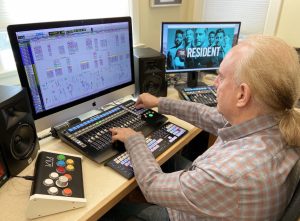
The Faderport 16 especially shines when it comes to mixing for Television. Here’s the workflow/process:
For each episode, my mix tech, Christina, at Sony, sends me the Pro Tools session, which is made from a combination of my template and my FX editor, Mike’s session, and the audio files folder that goes with it. They both have my template, so this is an easy collaboration. Mike has cut in all of the FX and BG tracks, from scratch, but also includes some pre-mixed 5.1 sounds, that I have made from previous episodes, that I sometimes blend into similar scenes in the new episodes. It ends up being a combination of my pre-mix and his new tracks, for these particular scenes. Mike also includes the Foley, which is performed by Robin and Sarah, the Foley walkers that I love at Sony. I asked for them to be on Madam Secretary, and they also created the Foley for other shows I worked on, such as The Goldbergs, and now The Resident.
What is great about the Faderport 16, is that I can easily grab the eight or so background tracks for a scene, and get a quick balance, then I press the Sends button, and (in this case, select Send C) and grab those same faders to add the ambiance reverb to the BGs that I have selected for that scene.
I then press the Pan button, which turns those same faders into left and right panners, that I use to pan the more specific tracks of the BGs, such as typing, paper shuffling, cars, and sirens. If I am just panning a single track, I may grab the blue pan knob to do a traditional knob pan. Any surround panning is accomplished with a touch screen I have, which mimics the surround panner in Pro Tools. I also use the Sends button to send FX to the subchannel, and any of the other 3 reverbs that I use. Even though I am using HUI control, I am able to do all of this. I also have the input meter turned on, as well as the ability to see the fader dB levels in the scribble strip. I also use the VCA button to show and hide my EQ plug-in. The Shift-Track buttons allow me to display the SMPTE (or BPM) onto the strip.
When I started mixing episodic television at my place, I need to be able to work efficiently and fast. I had used other small format controllers, but wanted something different in price and also features.
Having 16 faders available on the surface. I really mean this, when I am mixing backgrounds, it is nice to have the faders spaced relatively close together. I can work faster, grabbing 8-10 faders, and then switching to Sends mode and grabbing the same faders to add ambiance. This works very efficiently for me.
Seeing the track input levels on the FaderPort, as well as the level of the fader, really help during a mix, as well as the other features that I mentioned.
I would love to have a single button for saving. I am saving my session all the time, and it would be great if I could just double-tap on the big blue knob to save my work.
All in all, I love how you guys took a console for everyone and made it work so well with HUI in Pro Tools.
An added bonus of mixing at Jacksonland (my home studio) with the FaderPort 16, is that I already had a personal mix workflow in place when COVID-19 appeared, and have been able to continue working on The Resident, every week while all of us are sequestering ourselves from each other, since I was already mixing in this manner.
More information can be found at Bill Jackson’s website here.
Pigface: Everywhere All At Once
Saturday, October 10th
(click)?Pigface will go live online HERE at 6PM (CST)?(click)
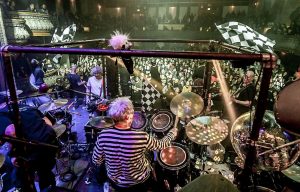 (Concert photography by: Bobby Talamine)
(Concert photography by: Bobby Talamine)
Martin Atkins has been a longstanding PreSonus artist/endorser and we’re excited that both he and his audio engineer, Mark Williams have embraced our StudioLive 64S Series III console mixers are their go-to “mission control” for their studio recording workflows.
Let’s find out more about them and what’s new in the Pigface camp in these surreal times we’re in:
Martin: I’ve had a long storied career – starting in 1979 when I joined Public Image Limited (the band started by Johnny Rotten when the Sex Pistols imploded) for a 5 year spell that included world tours and their most successful albums. A few years with Killing Joke (who just opened for Tool last year) some work with Nine Inch Nails (appearing on the Grammy award winning Wish) touring with Ministry and founding my own band Pigface – an industrial ‘supergroup’ that has included Mary Byker (PWEI, Gaye Bykers On Acid), Chris Connelly (Revolting Cocks, Ministry), Randy Blythe (Lamb Of God), Danny Carey (Tool), Curse Mackey (Evil Mothers), En Esch (KMFDM), Lesley Rankine (Silverfish, Ruby), Charles Levi (My Life With The Thrill Kill Kult), Bobdog Catlin (Evil Mothers), Bradley Bills (Chant), Andrew Weiss (Ween, The Rollins Band), Greta Brinkman (Moby, Druglord), Orville Kline (Porn and Chicken), Gaelynn Lea, Dirk Flanigan (77 Luscious Babes), Leanne Murray (Beer Nuts), Chris Harris (Project 44), Mike Reidy (Worm), Leyla Royale, Andrew Apocalypse, Ali Jafri, Roger Ebner, Bruce Lamont, Jesse Hunt, Dai, C.A.M., J Lamar, Just Chris (courtesy of Add-2) and Rona Rougeheart.
I started my own label Invisible Records in 1988 and, after a few short years it was obvious I should open my own studio – I bought Steve Albini’s tape machines (an 8 Track ½” and a ¼” machine both by Otari.) As digital started to enter our lives my studio became a hybrid of cool quirky analog, circuit bent pieces, and whatever digital interfaces were affordable at the time.
More and more of my time was spent either in the studio or out recording live events with my band in the US or over in China where I travelled a couple of times. I’ve always been impressed by how supportive PreSonus is to artists– either with no nonsense customer support when needed or by carefully crafting new pieces of equipment that just make sense. I think the piece that illustrated their support of artists for me was the now “classic” Faderport– when most companies were trying to sell multi-fader automation they (and then I) realized that most of us only needed one channel to write volume and pan automation – so, that, I guess, cemented everything for me.
It feels like things are really coming to fruition now, with support from PreSonus and my good friend and audio engineer, Mark Williams. I got to see the StudioLive 64S Series III console mixer in action first at Mark’s studio in Baton Rouge where he laid out all of the tracks, but then we got to work at River City Studio, which is an amazing recording facility, right there at the PreSonus office building. Everyone was so welcoming, people jumping out of meetings to say hi that I had met speaking at PreSonuSphere years ago (you should bring that back!) and I even met the CEO. Mark and I were able to tweak the tracks there and then finish up any tweaks remotely from Chicago.
All of this made the need for a StudioLive 64S console essential for my studio– with so much catalog and multi-track sessions it will be an essential hub of our next few years of activity as a band and as a label. I have the ability to quickly communicate the power of these live shows we have been creating. We recorded many of the shows during our 2019 tour – the line up was just AMAZING and, just be reading through the names you’ll know this was nothing to roll the dice with – the new format allows seamless passing of sessions, follow up tweaks, and easy workflows. Not only has the StudioLive 64S made the mixing of the live tracks from the last tour possible, it’s enabling possibilities of making other shows available for the fans who want more material from us.
Mark: I met Martin the first time in 1993 while working in college radio at the University of Alabama. I worked for him as a field representative for Invisible Records for about 5 or 6 years. Martin contacted PreSonus about one of his ACP88’s and became an Endorser for the company. Throughout the years, PreSonus has outfitted his studio with products including: the ADL600, Central Station, Fadeport, Digimax 96, and their award-winning DAW software, Studio One.
I’ve worked on numerous recording projects and mixes throughout the years with Martin and in November 2016, we recorded the Pigface 25th anniversary concert at the Chicago House of Blues using 2 StudioLive RM32 rackmount mixers and Capture recording software.
In 2019, I supplied Martin with a Quantum interface to record all Pigface live concerts with. The front-of-house (FOH) engineer for the final concert at Thalia Hall sent me all 32 channels of the recording. I synced up the 26 channels from the multitrack with 6 additional channels from the board mix and FOH feed.
Breaking down the 32 channels, 48khz recording down by song was quite an undertaking, as it was a massive amount of data to go through.
Martin flew down the last week of February 2020 so we could mix the album in my studio. The heart of our system was an IMAC with 32 gigs of RAM with a few external terabyte drives, a StudioLive SL64 console mixer, Scepter 8 monitors and Avantone Mixcubes. We went through each song to evaluate what we would use. As we did that, we created template fat channels for each musician. We had 3 drummers, 3 bassists, 2 guitarists, a DJ, 3 saxophones, cello, viola, violin, sitar and more vocalists than I can remember.
Basically we mixed everything “live” using the StudioLive 64S, relying on the console for dynamics processing and effects. We did some simple edits in Studio One. However, to maintain the integrity of the recording, we didn’t repair or fix anything. We used the recording as is in all its chaos and beauty. We didn’t correct any timing, pitch (i.e. no Auto-Tune!). I wanted to stay true to the Pigface form for the live energy.
A couple of days went by of mixing in my studio and then went to River City Studio. I was able to store the presets for the StudioLive 64 on the iMac. We just carried it up to the studio and plugged it in. The scenes loaded up quickly and easily. The transition from my studio to the PreSonus studio was seamless. We were able to get a different perspective in PAE HQ due to the different room and monitoring.
Then, we finalized the mixing in my studio and I uploaded the mixes online for filesharing, as Martin had to fly home to Chicago. He and I tweaked the final mixes over the next month easily to get to the final product that has been pressed to a beautiful Double LP. Y’all need to check it out… click on the link below for more info!
The mix that we did there is what is being used for the live video concert on October 10th.
We Don’t Ride Llamas… yes. WDRL!
Afropunk. Counterculture. Art. Rock Music. Weird things. Generation Z.
These 4 siblings hail from Austin, TX and have been a band for 6 years now.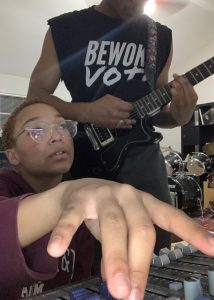
Around the end of 2019, We Don’t Ride Llamas (WDRL) was introduced to PreSonus by Grammy nominated music producer, King Michael Coy (Dr. Dre, H.E.R, Anderson .Paak, Ms Lauryn Hill, Busta Rhymes, Snoop Dogg, Bilal, Kendra Foster, Frank N Dank) who has been a Studio One Professional endorser for several years now.
By March of 2020, the group was armed with an AR16c mixer, a PX-1 condenser microphone, the PM-2 stereo pair mics and Studio One Professional DAW software, the kids have been upping their recording game while staying home during the time of COVID-19.
Being the super-duper creative explorers that they are, WDRL has maximized their use of these products in true DIY fashion:
From creating cool voice-overs (did y’all ? the trailer video above ☝️ yet?), producing band interviews and promotional videos to the more obvious use case of recording original music and cover songs… the band can now achieve high quality recorded or live streamed audio that kids from previous generations would not have been able to do.
As a matter of fact, We Don’t Ride Llamas recently just wrote a song called “Buddy” that is featured in Welcome To Sudden Death, now streaming on Netflix. You can check out both the “Groove” and “Dance” mix versions on Spotify here!!!
Synecdoche is the long awaited EP that’s on the horizon for release. The recording is an extremely personal project for WDRL as it explores feelings of being displaced, yearning for the future, their general melancholy at the current state of the world and how everything (for them at least) always comes full circle.
Here are a few things they had to say to us:
“We knew that he company has a longstanding reputation for products that are easy to use, sound great and within the budget for most rock bands. These are the reasons we initially were interested in PreSonus. Can’t wait to get our hands on one of those ATOM pad controllers (hint, hint)… :)”
“We love how user friendly and multifunctional everything is! Your products make us feel like sound alchemists even though we’re still fairly new to recording our own stuff at home.”
“The fact that the AR16c mixer is pretty simple to understand and we can just pick it up and go record somewhere is amazing. Also the amount of product videos and training tutorials PreSonus has available online now makes a huge difference.”
Instagram | Official Website
World-Renowned Drummer “Kirkee B” Talks PreSonus Sphere
If you know him well, you know him as “Kirkee B.” To the rest of us, Curt Bisquera is a world-renowned professional studio and live drummer. Having played with more famous artists than we have room to name in this blog post, he’s in-demand—both in the studio and on the road. Talk about a Dinner Party DREAM guest list: Mick Jagger, Elton John, Tom Petty and the Heartbreakers, Seal, John Fogerty, Sarah McLachlan, John Legend, Hans Zimmer, Josh Groban, Lana Del Rey, Celine Dion, Johnny Cash, Billy Joel, Tina Turner, Donny Osmond, Lionel Richie… those are a few of his credits over the last 30 years in the music industry.
We recently connected with Kirkee B on Instagram and found out he’s a HUGE PreSonus Sphere user and fan! We thought it would be nice to hear his thoughts on PreSonus Sphere.
How did you first hear about Sphere?
I heard about PreSonus Sphere through PreSonus’ Artist Relations Manager, Perry Tee. He really didn’t say what it was… he just said, “Look out for what’s coming… it’s gonna blow your mind!” And he was correct!
What got your attention?
The video content. I’m on Sphere every day watching all the new video content that’s posted. I’m getting better at using Studio One 5, thanks to all the videos from Gregor and Joe! They are a huge help and inspiration.
What’s keeping your attention?
The fact that it is always maintained and updated and that I can also join in with a bunch of other users around the world.
- Kirkee B with Sir Elton John
- Kirkee B in high school
- Kirkee B with Seal
- Kirkee B on Set of the Flintstones
Can you speak to the value of PreSonus Sphere?
Oh man, where to begin? After the morning espresso kicks in, there are two things I check: the news and PreSonus Sphere! I always feel like I’m on top by checking Sphere everyday… Super valuable!
Is there something specific that you’ve learned from one of the exclusive videos?
YES! I’ve learned how to use the Splitter Tool thanks for PreSonus Sphere and I LOVE IT!
What would you tell someone who’s considering Sphere?
Once you sign on, you will feel the world of creativity at your fingertips! There’s nothing like it.
In your opinion, how can PreSonus Sphere change the music industry?
It allows users to gain confidence at their own pace in using PreSonus products and software in an easy, one-stop, online environment. Confidence is huge if you want to be successful in this industry.
How does it feel to be one of the FIRST to join the PreSonus Sphere family?
I am honored! It’s really changed the game for me, now in my creativity is limitless. I can do things now I was unable to do in the past. NOW the future for me is PreSonus Sphere!
Join PreSonus Sphere today!
Connect with Curt on Instagram here!
David Torkanowsky: Livestreaming in the Big Easy with StudioLive 32SC
[For those of you who don’t know already about the talented New Orleans based jazz pianist David Torkanowsky, you are about to. Lucky for us, New Orleans is just an hour drive to the Southeast of Baton Rouge (where PreSonus is based out of).
We’re honored to have our relationship with David: not only is he a true master improvising musician from the city where Jazz was born, he is also in tune with the latest 21st century audio technology that helps artists actualize and share their sound to audiences world-wide.
Without any further ado, we’ll let him take it from here…]
I’m David Torkanowsky and I’ve been lucky to have grown up in New Orleans under the tutelage of Ellis Marsalis, Danny Barker, James Black, Al Hirt and other Smithsonian-level greats… too many to mention.
I’ve also toured and recorded with artists as different as Al Hirt and Al Jarreau, Boney James, and Joe Henderson. I’ve been M.D. for the great vocalist Dianne Reeves.
The touring and performance economic model for all musicians, regardless of genre, has been decimated by the COVID-19 pandemic.
Many artists, myself included, have navigated a sudden and steep learning curve regarding our social media presence. New Orleans has always tended toward the organic and away from the technical aspects of playing music, which I love… but that paradigm has proven to be a headwind as we move toward our new reality.
Online work has moved from being one of the revenue channels in our business model to the only viable channel.
Posted by PreSonus Audio Electronics on Thursday, May 28, 2020
So, I’ve been producing, directing and playing in livestreams from The Bayou Bar at The Pontchartrain Hotel in New Orleans for the past month, with artists such as: Ivan Neville, Nigel Hall, The Tin Men, Zachary Richard, Meschiya Lake, Sasha Masakowski, Jason Marsalis, Herlin Riley, Davell Crawford, and jazz great Cyrille Aimée.
Many cats are teaching online, and many more are performing live. These live performances have completely replaced the in-person delivery of our art. Although, in many respects, it will never duplicate the transformative experience of being in the same space. The only way we can minimize this disparity is by presenting this content in the best possible way. Primarily, it has to sound good! Most of the streams that I’ve seen, some with world-class artists, don’t really touch me because they sound less than average. A solo acoustic instrument can sound just okay through an iPhone mic, but it’s never truly impactful. Add any other instruments, and you can just forget about it.
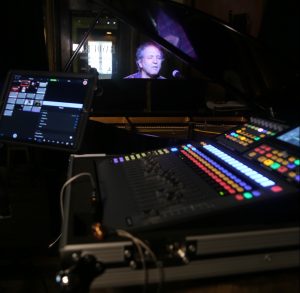 That’s why the PreSonus partnership has been such an asset.
That’s why the PreSonus partnership has been such an asset.
I’ve gotten a massive amount of feedback (the good kind!) from the listening public about how amazing these artists are sounding on these social media live broadcasts, and there’s one reason:
The PreSonus StudioLive 32SC. Their newest Series III S line of consoles are exactly what the doctor ordered to mix streamed performances. I’m using the 32SC, the powerful and compact member of the Series III family. The Fat Channel technology makes tweaking the impact of a particular instrument intuitive and fast. The EQ, Compression and digital FX are all super usable. It’s a game-changer. It’s one serious piece of gear!
Contact David for professional inquiries: torkanowsky@me.com
[Incidentally, from now until Aug 31, 2020, anybody who buys a qualifying StudioLive Mixer will get a pair of Eris E7 monitors for free!]
Jakubu Griffin: using the StudioLive 24R as a USB Audio Interface
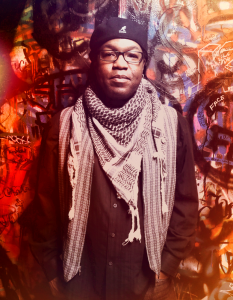 [Jakubu Griffin is truly one of Las Vegas and NYC’s most versatile drummers. Son of trombonist Dick Griffin (who played with the legendary Rahsaan Roland Kirk), he has been surrounded by music from an early age. Growing up with many musical instruments and influences around him, he was always drawn to percussion and can remember playing the drums as early as age 3 or 4. He started studying classical piano at age 5, and later added the trumpet.
[Jakubu Griffin is truly one of Las Vegas and NYC’s most versatile drummers. Son of trombonist Dick Griffin (who played with the legendary Rahsaan Roland Kirk), he has been surrounded by music from an early age. Growing up with many musical instruments and influences around him, he was always drawn to percussion and can remember playing the drums as early as age 3 or 4. He started studying classical piano at age 5, and later added the trumpet.
Jakubu has performed and led groups all over the world. While living in Las Vegas in the early 2000s, He was featured in David Cassidy and Sheena Easton’s “At The Copa” at the Rio Resort. After that, he was musical contractor and drummer on a show featuring Chaka Khan, Peabo Bryson, and Melissa Manchester called Signed, Sealed, Delivered: a Celebration of Stevie Wonder’s Music at the Venetian Resort.
Griffin has also been a musical director for Kings Productions, as well as Norwegian and Premier cruise lines. Back in the NYC area where he grew up, he has performed and recorded with award winning jazz trumpeter Dave Douglas, Ryko/Warner recording artist Matt White, and Broadway stars Tracie Thoms (Rent, Case) and Shoshana Bean (Wicked). Jakubu is currently playing with the legendary Las Vegas singer Clint Holmes. He was also the house drummer for Cirque Du Soleil’s production of Zarkana which premiered at NYC’s world famous Radio City Music Hall in June of 2011, moving on to Madrid, as well as having a historic run at the Kremlin Theater in Moscow in 2012. Jakubu’s powerful, yet very musical drumming reputation has been highly appreciated by many musicians and music lovers both here and abroad.
When not on the road, he’s kept busy at home recording and teaching. But, with the recent stay-at-home measures implemented due to COVID-19, working in his own studio has become his primary focus.
Jakubu has graciously given us a virtual “walk-through” of his home studio environment, where the StudioLive 24R is the centerpiece and his dedicated audio interface to his DAW of choice, Studio One. Let’s check out his setup and how he’s been using our products in action at home.]
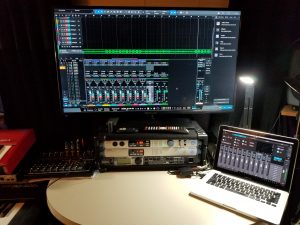 Jakubu: My first audio interface was the PreSonus Studio 192 along with the DigiMax DP88. As a drummer, I need to have at least 8 channels dedicated to drums in my space at all times for my own use. With the Studio 192 and DP88 giving me 16 total channels and great preamps, I was able to stack them in a rack and run my 8 drum channels into the DP88 using the Studio 192 rear channels for my keyboards, bass, extra drum channels etc. and even leaving the 2 front channels open for a vocalist or instrument to plug right in. As my studio evolved, I graduated to the StudioLive 24R rack mixer, as well as the NSB 8.8 AVB Networked Stage Box to expand channel inputs in my other rooms.
Jakubu: My first audio interface was the PreSonus Studio 192 along with the DigiMax DP88. As a drummer, I need to have at least 8 channels dedicated to drums in my space at all times for my own use. With the Studio 192 and DP88 giving me 16 total channels and great preamps, I was able to stack them in a rack and run my 8 drum channels into the DP88 using the Studio 192 rear channels for my keyboards, bass, extra drum channels etc. and even leaving the 2 front channels open for a vocalist or instrument to plug right in. As my studio evolved, I graduated to the StudioLive 24R rack mixer, as well as the NSB 8.8 AVB Networked Stage Box to expand channel inputs in my other rooms. 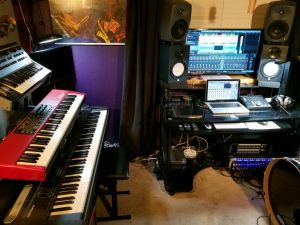 Since I don’t have the space for a console mixer on my workstation, the StudioLive 24R is the perfect solution for me with UC Control as my console. I use the HP60 for 6 stereo headphone mixes. With a router plus the network control via Wi-Fi of the StudioLive 24R, my clients have the option of using the QMix-UC app to control their own headphone mixes. The PreSonus Monitor Station allows me flexibility to switch between my different sets of of studio monitors and speakers, and also gives me 4 more headphone outputs if needed. I’ve used other DAWs, but I’m completely sold on Studio One Professional because it’s just more user/musician friendly. I understood more about using Studio One in 24 hours than I’ve learned on other DAWs after countless months of usage. I’m a musician first, not an engineer.
Since I don’t have the space for a console mixer on my workstation, the StudioLive 24R is the perfect solution for me with UC Control as my console. I use the HP60 for 6 stereo headphone mixes. With a router plus the network control via Wi-Fi of the StudioLive 24R, my clients have the option of using the QMix-UC app to control their own headphone mixes. The PreSonus Monitor Station allows me flexibility to switch between my different sets of of studio monitors and speakers, and also gives me 4 more headphone outputs if needed. I’ve used other DAWs, but I’m completely sold on Studio One Professional because it’s just more user/musician friendly. I understood more about using Studio One in 24 hours than I’ve learned on other DAWs after countless months of usage. I’m a musician first, not an engineer.
Jakubudrum Studios is my home as well as my recording space. I have three isolated rooms on one floor. I have eight CCTV cameras installed, and video monitors in every room for visual communication. My main “studio” room is my acoustically-treated drum and keyboard room, as well as my control booth. 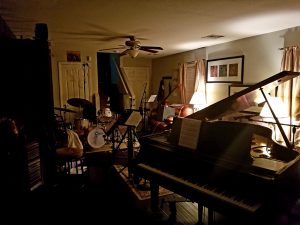 My living room is my large room and features my Baldwin L grand piano. My smaller acoustically-treated room is great for acoustic bass as well as other instruments, and it also serves as a vocal booth and isolated amp miking room. I’ve done several live recording sessions in the studio with different configurations ranging from solo piano to live strings… and various band sizes, genres, horn combinations, etc. I do a lot of drum and percussion tracking for projects myself, but I’ve also engineered tons of keyboard track layering sessions, instrument tracking sessions, vocal tracking, and my space is perfect for tracking bass and drums together. I record voice-overs as well, and I’m currently producing an audiobook session.
My living room is my large room and features my Baldwin L grand piano. My smaller acoustically-treated room is great for acoustic bass as well as other instruments, and it also serves as a vocal booth and isolated amp miking room. I’ve done several live recording sessions in the studio with different configurations ranging from solo piano to live strings… and various band sizes, genres, horn combinations, etc. I do a lot of drum and percussion tracking for projects myself, but I’ve also engineered tons of keyboard track layering sessions, instrument tracking sessions, vocal tracking, and my space is perfect for tracking bass and drums together. I record voice-overs as well, and I’m currently producing an audiobook session.
Now that I have the StudioLive 24R, I have the luxury of using 14 dedicated drum channels just for myself. I usually use two different sets of overhead mics simultaneously, another stereo room mic, and a subkick along with my normal kick, snare, hi hat, and tom mic combinations. 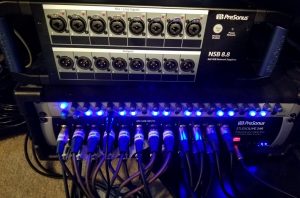
I also use seven channels for my keyboards, and a channel for my bass amp to run direct with a pre amp. I use the NSB 8.8 Stage Box in the other rooms to mic the piano, horns, strings, vocals, etc. I use the 12 outputs from the 24R mixer to sum 2 outputs to each of the 6 stereo inputs of the HP60 headphone amp and made them stereo mixes from UC Control. Again, I have a router connected to the 24R mixer and a network setup so people have the option of using QMix-UC to control their own headphone mixes. I have two sets of studio monitors, but I also have small PA for the keyboards, rehearsals, gigs etc. The monitor station is actually one of my favorite pieces of PreSonus gear to be honest. I love the versatility I have with 2 sets of monitors, but I even use the PA as a 3rd reference sometimes. The Monitor Stations onboard talkback routed through the HP60 is perfect for my setup, plus I’m the type of guy that just needs a big volume knob in my life since I don’t have a console.
So, funny story: I actually learned about PreSonus through another drummer, Dre Boyd, who is also an Artist with them. We both met and quickly became good friends working for the Cirque Du Soleil company. I finally had the space and needed an interface to start getting into recording and he highly recommended the Studio 192 and DP88. I’m an impulse buyer, but he told me to wait so he could “hook me up” with his representative at PreSonus. Well I’m impatient and went ahead with the purchase of the interfaces anyway. I was ecstatic, but then a couple weeks later Dre let me know that the PreSonus Artist Relations Manager was none other than my college buddy, Perry Tee… so I should have waited!!! Not only do I love the products, PreSonus reconnected me with an old friend, who happens to be on guitar in this video below that we produced remotely with 4 other buddies using Studio One Professional:
I love the power and versatility that I have with the StudioLive 24R mixer, especially for low-end instruments. Now I have the ability to mic an acoustic bass and get a warm, powerful tone without any need for a DI or outboard preamp. Its considerably better for my drum miking as well. I get better headphone mixes, and I have plenty of room and power to hear my kick drum perfectly which can be a problem in regular interfaces without external pre amps. The ability to control mixes across Wi-Fi is a true bonus allowing my clients the flexibility to control their own mixes with QMix-UC. The HP60 is a great solution for my headphone needs with 6 channels, and stereo mixes plus the Monitor Station is one of my favorite additions to the studio, and has made my work flow much smoother and faster. The onboard talkback is perfect for my space. Studio One is absolutely the best DAW available, in my opinion. I know has everything I could possibly need for my studio. Everything in my setup works seamlessly. I couldn’t be more satisfied with the sounds, and results I get with my gear.
Every piece of gear is perfectly matched and catered to the needs of my workflow and studio ecosystem… thank you, PreSonus!
For professional inquiries, contact: jakubudrum@gmail.com
[Incidentally, from now until Aug 31, 2020, anybody who buys a qualifying StudioLive Rack Mixer will get a PX-1 microphone for free!]
Mastering Martha Davis—for Vinyl!
Martha Davis is best known for her string of hit singles in the 80s with the Motels.
Songs like “Suddenly Last Summer” and “Only the Lonely” were Top 10 hits that remain on playlists to this day, but her varied (and ongoing) career includes solo albums, an acting stint in “Bill & Ted’s Excellent Adventure,” creating music for several films (including “Moscow on the Hudson,” “Teachers,” “The Golden Child, and her “Soul Man” duet with Sly Stone), and working in theater. She still tours—at least when there’s not a pandemic—and amazingly, her voice is better than it was in the 80s. But, it took Studio One’ Project Page to bring a solo album back to life that had been all but written off ten years ago.
The collection of songs on “I Have My Standards” (Fig. 1) was meant to be an album of jazz standards, with orchestration—but the twist was that Martha had written the “standards.” She cut a demo album with longtime musical collaborator Marty Jourard (piano, tenor sax), Allen Hunter (bass), Paul Pulvirente (drums), and Felix Mercer (clarinet). However, the budget to do the orchestration never materialized, and the record was never finished.
When Martha found out I did mastering, she mentioned “the album that never was” and being curious, I asked to listen to it. I was floored. The songs were deep, the vocals flawless, and the instrumentation excellent. I heard the lack of orchestration as an advantage because the sparse, emotional treatments were compelling in themselves.
Except…being a demo, there were technical problems. Among other issues, the acoustic bass overpowered the song on some of the demos, the mic had a boxy quality that was no friend to Martha’s voice, and there were mix and level issues that resulted in a lack of clarity. I asked if she could locate the multitracks so I could remix before mastering, yet no one had any idea where they were. Oh, and the project had to be mastered for vinyl—she wanted to put it out on 180-gram vinyl for her nascent record label, Remarkable Records.
ENTER STUDIO ONE
Fortunately, the songs were recorded with the same basic setup. Although I’m usually not a fan of “one size fits all” mastering chains, in this case, there weren’t too many variations among the songs (Fig. 2).
The Splitter separated the frequencies below 178 Hz from the rest of the audio. With vinyl, bass needs to be centered, and the dynamics need to be controlled—hence the Limiter, and the Dual Pan. with both left and right channels set to center.
Another reason for the Splitter was that in some songs, the acoustic bass overpowered the mix. Note the fader at the end of the Dual Pan, set to -9.0 dB to help keep the bass under control. This setting worked for most of the songs but for one of them, I had to pull the level down by -13.8 dB to get the right balance. The frequency splitting was crucial.
For the rest of the audio, EQ was by far the most important process. Fig. 3 shows the setting that was used on most of the songs. Remember that the RIAA curve for vinyl (which boosts treble massively on the vinyl, then cuts it on playback) isn’t a fan of high frequencies, so the highs were often cut on vinyl masters. Although the steep high-cut filter wasn’t needed on all the songs, when necessary this gave a sound that was more consistent with vinyl records.
The substantial dip at 625 removed the muffled quality by making the highs more prominent. The dips at 2.72 and 3.06 kHz were tricky—they were essential in removing a resonance on Martha’s voice that took away from of the openness and intimacy. Almost all the songs needed the dip at 8 kHz, where treble energy from recording the individual tracks “bunched up.” Bass wasn’t an issue, because the split took care of that.
The Binaural pan was set between 124% and 137%, depending on the song. This mainly had the effect of spreading out the reverb more than the instruments, which enveloped the sound in an ambiance it didn’t have otherwise. This also moved the reverb a bit out of the center, so there could be more focus on the voice.
Finally, I’m not much of a believer in “special sauce” processors, but the Scheps Parallel Particles from Waves was ideal (Fig. 4).
After taming the highs to accommodate vinyl mastering, I wanted to restore a perception of high frequencies. Adding a significant amount of the Air parameter, with just a touch of Thick and Bite for a little more midrange presence, did exactly what was needed.
FINAL TOUCHES
I was aiming for a LUFS of -12. This was a bit of a compromise between vinyl and streaming. A little compression would make it easier for the vinyl cutter to optimize the levels for vinyl, and besides, being a little “hotter” than the typical streaming target of -14 LUFS was fine. For the last stage of dynamics control, I used IK Multimedia’s Stealth Limiter (which is designed for mastering), in the Project Page’s Post slot. It’s a transparent but CPU-intensive plug-in, hence using only one instance as the final limiter. The songs were the levels I wanted, so they needed only very slight tweaks to hit the Stealth Limiter a little harder or softer to reach the -12 LUFS goal.
It was easy to generate timings from the Project Page, so that those cutting the vinyl would know where to put the bands between cuts…and we were on our way. The vinyl hits the world in August (available from themotels.com and specialty record stores). The digital release is available now on iTunes, Apple Music, Spotify, Amazon Music, Amazon Disk on Demand, and you can hear it on Pandora, Shazam, iHeart Radio, and YouTube Music. Most of these have ways to preview the songs, and I think it’s well worth following some of the links to check out music that sounds like it’s frozen in time, yet curiously modern.
I checked out some of the customer reviews on Amazon. While they’re all over-the-top about Martha’s voice and songs, as you might expect my favorite is the one that said “The album is mastered in such a way that you would think that Martha Davis is actually in the same room with you.” Mission accomplished (Fig. 5)!
